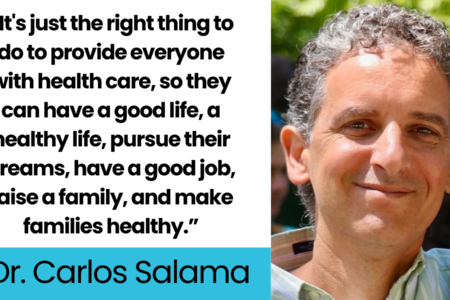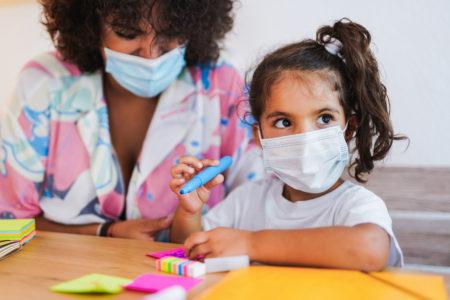
Share On Social!
Did you know that germs are everywhere? The world is covered in germs!
Everything has germs – every surface, material, and object, including your body.
You read that right – your body is covered in germs, including viruses, bacteria, and some funguses.
However, we’re often not aware of the germs around us and on our bodies because they’re too small to see and don’t usually cause harm to healthy people.
In fact, many of those germs are good for us – they protect us and can keep other germs that could harm us from growing.
Reservoirs: A Natural Habitat for Germs
Whether germs are healthy or harmful to us, it’s important to know where they live and thrive – places called “reservoirs.”

There are many reservoirs in the human body, such as our skin; gastrointestinal (GI) system, including the stomach, intestines, and perineum; respiratory system, including the nose, mouth, and lungs; and blood.
There are also reservoirs in the world around us, including sinks, drains, and other wet surfaces; dry surfaces like countertops; dirt, soil, and plants; and devices and objects like stethoscopes and keyboards.
Different reservoirs can grow different types of germs, and some germs can be found in more than one reservoir.
The Risks of Germs Spreading
Germs can spread between and among reservoirs, which can be harmless or can make someone sick.
For example, some germs that are harmless in the gut can cause harm when they are spread to a place that they are not normally found, such as the lungs.
Germs can also cause harm if something happens to their reservoir.
For instance, germs that are normally on the skin can cause an infection elsewhere if germs enter the body through a break the skin, such as a cut or needlestick wound.
Infection Control Against Germs
While a healthy immune system can protect people from most germs that could make them sick, healthy people can still get sick from germs that don’t normally live on or in the body, such as the common cold, and more serious illnesses, such as measles.
When germs that shouldn’t be on or in the body invade, they can not only make the person sick, they can also spread from that reservoir to other people, or to the environment.
Germs can cause even bigger problems for someone who is already ill with a weakened natural immune defense, such as serious infections.
That’s one of the reasons that infection control in healthcare is so important – because there are patients who are very vulnerable to infections caused by germs.
Because you can’t always tell when someone is vulnerable to infection, or when someone has a germ that could cause harm to others, its important to practice infection control actions all the time, not just when someone is obviously ill.
What Can You Do to Promote Infection Control in Your Healthcare Setting?
Access more information about infection prevention and control in healthcare by visiting resources from CDC Project Firstline.
Project Firstline creates resources, including videos and shareable images, web buttons, posters, and print materials. They also have facilitator toolkits to help workers lead trainings even if they are not an infection control expert.
Salud America! at UT Health San Antonio is working with the National Hispanic Medical Association to bring Project Firstline infection control educational content to healthcare workers, so they are equipped with the knowledge they need to protect themselves, their facilities, and their patients (Latinos and all communities) from infectious disease threats in healthcare settings.
You can read these articles:
- What is Project Firstline?
- What’s a Virus?
- How Do Viruses Make Us Sick?
- What is Ventilation and Why Does It Matter?
- What’s a Respiratory Droplet and Why Does It Matter?
- Why Do Cleaning and Disinfection Matter in Healthcare?
- We Need to Talk about Hand Hygiene Again
- What is the Goal of Infection Prevention and Control in Healthcare Settings?
- N95 Respirators: Everything You Need to Know
- How Do I Safely Use a Multi-Dose Vaccine Vial?
- Why are Gowns, Gloves, and Eye Protection Recommended for COVID-19?
“Healthcare teams in hospitals, nursing homes, and other care settings are the front lines against the spread of infection,” said Dr. Amelie G. Ramirez, director of Salud America! at UT Health San Antonio. “CDC’s Project Firstline is bolstering those efforts by developing evidence-based tools that can be delivered in a variety of ways to make infection control learning convenient and accessible for busy healthcare staff.”
Learn More about Project Firstline!
Editor’s Note: This article is part of a collaboration between Salud America!, the National Hispanic Medical Association, and the CDC’s Project Firstline. To find resources training materials, and other tools to bolster knowledge and practice of infection control, visit Project Firstline and view Salud America!’s infection control content.
Explore More:
Infection ControlBy The Numbers
142
Percent
Expected rise in Latino cancer cases in coming years




[…] The pandemic is another chapter in the bitter story of American racism and inequality. Black and Latinx people are being infected and are dying at much higher rates than white Americans. Many people of […]
[…] coronavirus has killed over 61,000 Latinos in America according to the CDC, accounting for over 18.2% of the total COVID deaths in the […]
[…] Whereas Hispanics make up 11% of D.C.’s inhabitants, they signify 19% of the COVID cases, and 14% of the deaths. Equally, 46% of D.C.’s residents are Black, they usually make up an alarming 75% […]
[…] and historical mistreatment. According to the U.S. Centers for Disease Control and Prevention, Latino and Black American communities are three times more likely to become infected with […]
[…] Covid pandemic has hit the Latino community particularly hard, and data from the nonprofit health equity advocacy group Salud America! shows Latinos lead in the 0-24 age […]
[…] the pandemic, Latinos took major blows, both in terms of COVID-19 cases and also from the economic recession under former President Donald Trump. Nearly half (49%) of […]
[…] the positive trend, the harm may have already been done. The pandemic has disproportionately impacted Latino communities. Reuters reported that election-related or political disinformation that […]
[…] pesar de la tendencia positiva, es posible que el daño ya esté hecho. La pandemia ha impactado desproporcionadamente Comunidades latinas. Reuters informó que la desinformación política o relacionada con las […]
[…] residentes blancos muestran una tasa mucho más baja con 10 muertes por cada 100,000 habitantes(8 9) . Los afroestadounidenses por su parte, denuncian subsistemas de salud que les segregan […]
[…] https://salud-america.org/coronavirus-case-rates-and-death-rates-for-latinos-in-the-united-states/ […]
[…] https://salud-america.org/coronavirus-case-rates-and-death-rates-for-latinos-in-the-united-states/ […]
[…] communities have the second-highest number of COVID-19 cases in the U.S. They’re also more likely to become hospitalized and die from the disease than other […]
[…] total, around 160,000 Latinos were killed by COVID-19. This accounts for 16% of the 1 million deaths in the country. The […]